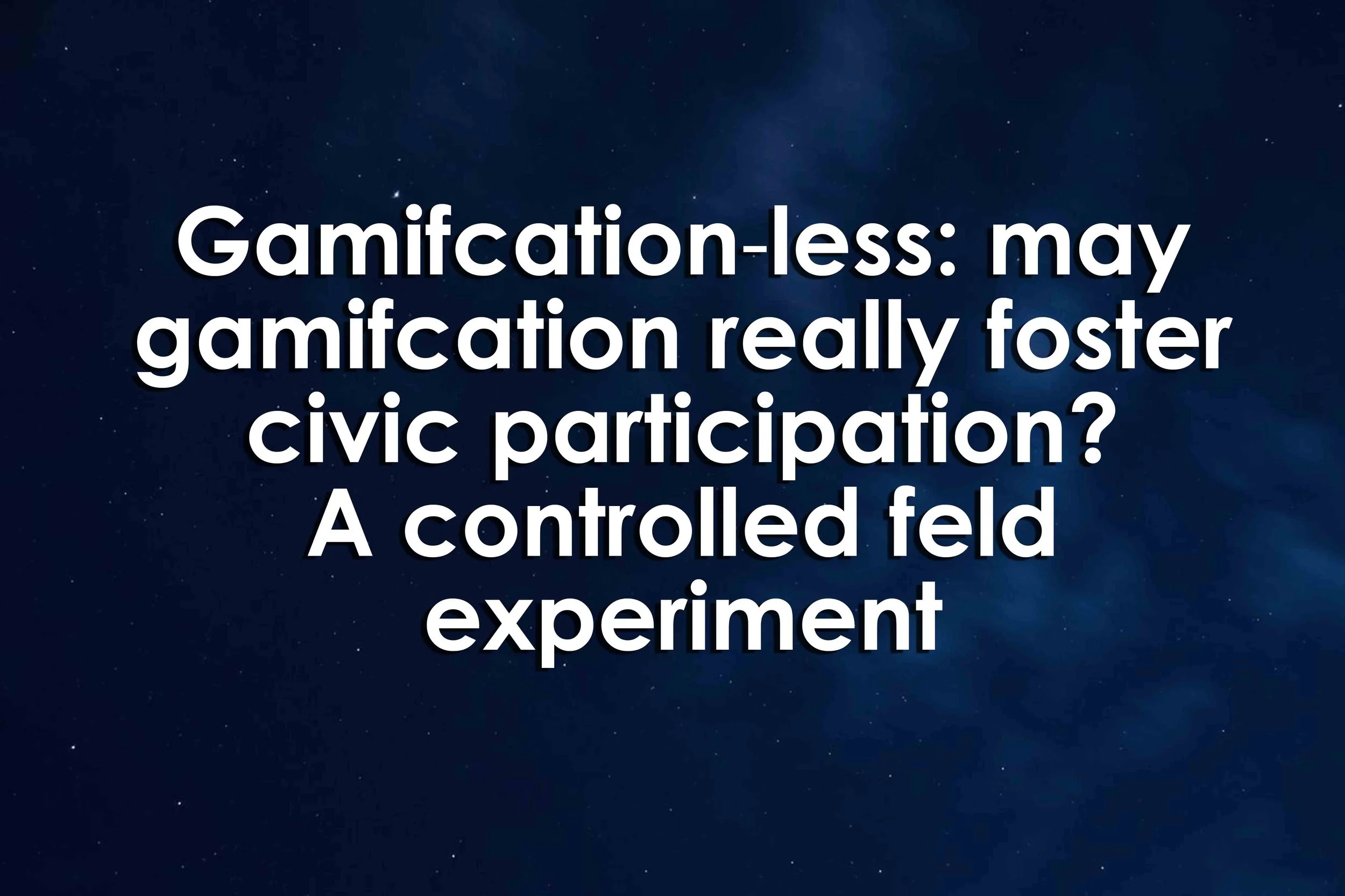Gamification‐less: may gamification really foster civic participation?
Gamification‐less: may gamification really foster civic participation?
Gamification‐less: may gamification really foster civic participation?
A controlled feld experiment
By Marco Romano, Paloma Díaz and Ignacio Aedo
Abstract
“In the context of smart communities, it is essential an active and continuous collaboration between citizens, organizations and institutions. There are several cases where citizens may be asked to participate such as in public decision-making process by informing, voting or proposing projects or in crisis management by sharing precise and timely information with other citizens and emergency organizations. However, these opportunities do not automatically result in participatory practices sustained over time. Mobile technologies and social networks provide the substratum for supporting formal empowerment, but citizen engagement in participation processes is still an open issue. One of the techniques used to improve engagement is gamifcation based on the humans’ predisposition to games. So far, we still lack studies that can prove the advantage of gamifed systems respect to non-gamifed ones in civic participation context. In this work, we present a between-group design experiment performed in the wild using two mobile applications enabling civic participation, one gamifed and the other not. Our results highlight that the gamifed application generates a better user experience and civic engagement.”
Reference
Romano, M., Díaz, P., & Aedo, I. (2021). Gamification-less: May gamification really foster civic participation? A controlled field experiment. Journal of Ambient Intelligence and Humanized Computing. doi:10.1007/s12652-021-03322-6 https://link.springer.com/article/10.1007%2Fs12652-021-03322-6
Keyword
Civic engagement, gamification, pervasive applications, social sensing HCl study, research
Category
Gamification

